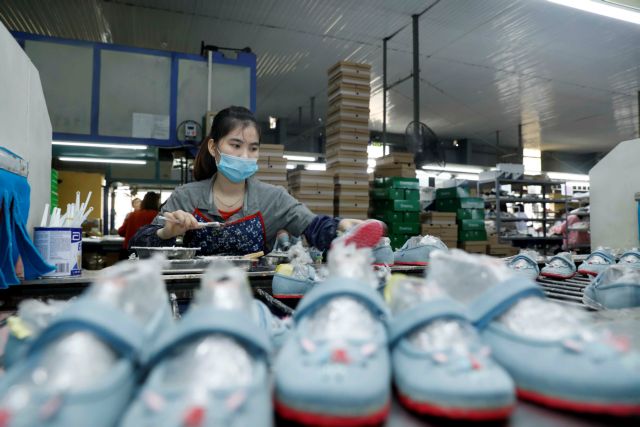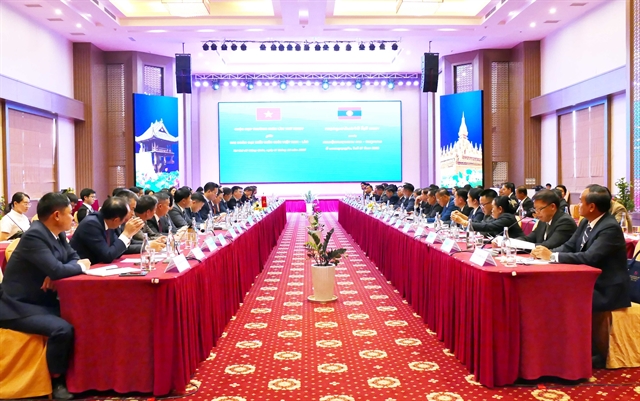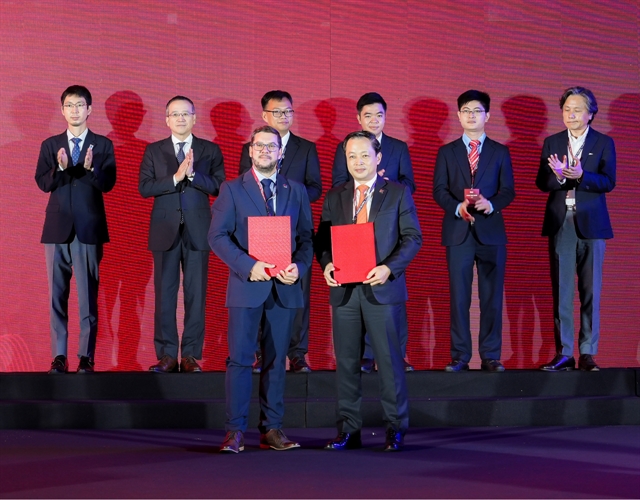 Economy
Economy


|
| A worker makes shoes at Ha Tay Chemical and Weaving Co.,LTD. A new approach and mindset are needed for local manufacturing businesses towards industrialisation and modernisation. VNA/VNS Photo |
HÀ NỘI - The internal strength and competitiveness of Việt Nam’s industry are poor while its added value also remains low. The local industry still largely depends on foreign resources such as foreign direct investment capital, spare parts and components, said Deputy Minister of Industry and Trade Đỗ Thắng Hải.
Deputy Minister Hải made the comments at a symposium on a new mindset and approach to industrialisation and modernisation to 2030, held by the Party Central Committee's Economic Commission in coordination with relevant agencies in Hà Nội on Tuesday.
This is one of 10 symposiums within the framework of the third Industry 4.0 Summit and Expo themed "Accelerating modernization and industrialization in digital era,” which is taking place from November 9 to December 6.
Addressing the event, vice chairman of the Party Central Committee's Economic Commission Nguyễn Đức Hiển emphasised that Việt Nam has set a goal of becoming a developing country with modernity-oriented industry, surpassing the low-middle income level by 2025, and a developing nation with modern industry and high-middle income by 2030.
Việt Nam aimed to become a developed and high-income country by 2045, Hiển added.
To achieve the above-mentioned goals, one of the key tasks is to promote industrialisation and modernisation on the basis of scientific and technological advances and innovations, Hiển said.
At the same time, Việt Nam needed to identify the context and major trends of industrialisation and modernisation, thus introducing a new mindset and approach to industrialisation and modernisation, he noted.
At the symposium, domestic and foreign participants shared and clarified issues about the context and major trends of industrialisation and modernisation in the world as well as international experience in realising industrialisation and modernisation, and innovation experience to accelerate post-COVID-19 economic recovery.
Deputy Minister Hải told participants that after 35 years of accelerating industrialisation and modernisation, Việt Nam's industry has made certain achievements. In 2020, the proportion of the processing and manufacturing industry reached 16.7 per cent of the country’s GDP. Of the figure, the proportion of medium and high-tech industries accounted for 40 per cent of the added value and export turnover of the industry.
In the 2020 edition of the United Nations Industrial Development Organisation (UNIDO)’s CIP Index, Việt Nam ranked 38th among 152 countries in 2018, compared to 41st position in the previous year.
However, Hải said that the process of industrialisation and modernisation in the past three years has been relatively slow, with little change due to the limited resources and poor internal capacity of Vietnamese enterprises while enterprises did not get much support from the State.
Hải also attributed the slow pace of industrialisation and modernisation to unskilled human resources with a low ratio of trained workers and there was a lack of linkage between manufacturing businesses and training institutions. Managers of manufacturing businesses have less experiences in competitiveness in the global market.
The technological level of Vietnamese industrial businesses remained limited. According to a 4IR (Industrial revolution 4.0) readiness assessment conducted by the Ministry of Industry and Trade, most Vietnamese businesses are standing outside the 4IR. Việt Nam's industrial sector has low access to all pillars of smart manufacturing.
Hải said industrial production faces many difficulties in access to investment capital. The manufacturing sector required a large amount of long-term investment capital while social resources invested in production were limited due to the slow return on investment.
The deputy minister noted that the reason for the problems was a lack of attractive legal framework and policies in order to support domestic industrial enterprises to improve their productivity, competitiveness, and technological innovation thus becoming an important driving force for the country's development.
He suggested that 2025 could lead to further challenges that require great efforts of all stakeholders and breakthroughs are also needed to accelerate the growth of the local manufacturing industry. VNS




